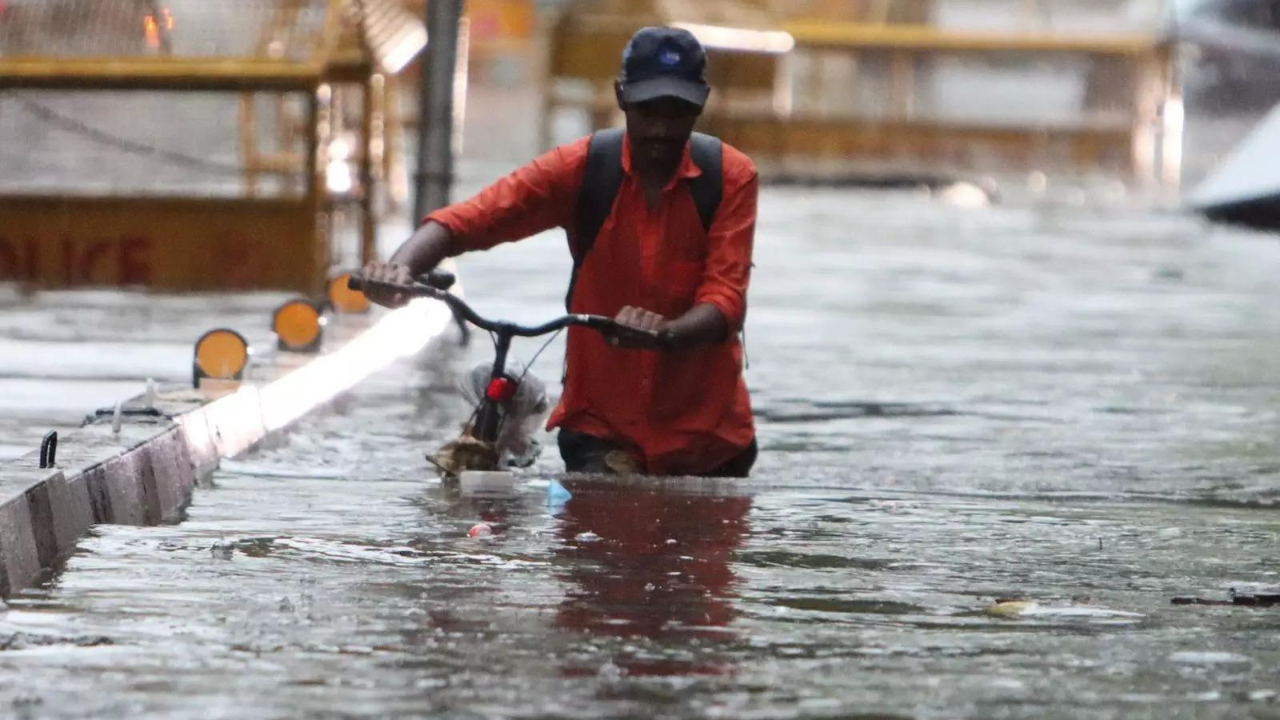The heavy rains led to a deadly airport roof collapse, flight disruptions, the closure of a metro station, blocked underpasses, and significant traffic congestion, transforming the city’s respite from the heat into turmoil.
What is the situation in Delhi?
According to the India Meteorological Department (IMD), Delhi, with a population of 20 million, experienced 228.1 mm of rainfall in 24 hours at its primary Safdarjung weather station until 8:30am on Friday, representing a 266% deviation from the norm.
Delhi has not recorded so much rain in the entire month of June at least in the last 15 years, IMD data shows. On Friday, in three hours alone, areas around the Delhi airport got 148.5 mm of rain, compared with 101.7 mm for all of June last year.
The arrival of the seasonal monsoon rains, which gradually cover the country starting from its southern tip at the end of May, provided relief from the heatwave conditions that had persisted in Delhi until the previous week. Prior to June 22, the city had experienced temperatures approaching 50 degrees Celsius and at least 40 consecutive days with temperatures at or above 40 degrees Celsius, according to IMD data.
As heavy rains battered Delhi early Friday morning, many areas of the city were waterlogged, resulting in flood-like conditions and forcing vehicles to navigate through massive traffic jams. The Delhi Traffic Police issued alerts to inform commuters about the affected roads and advised them to plan their journeys accordingly. Visuals from various parts of the city showed several areas submerged in water, causing long traffic jams that impacted commuters, particularly office-goers.
What led to the
Experts attribute the occurrence of extreme rainfall events to climate change, as every degree increase in the Earth’s temperature can lead to a 7% increase in atmospheric water vapor, according to a
Nasa. Sunita Narain, director general of the research body Centre for Science and Environment, told Reuters, “Because of climate change, you will get more extreme rain events, which means more rain in a fewer number of rainy days, rainy hours.”
What can be done to address challenges?
To address the challenges posed by erratic monsoon patterns, experts suggest that India needs to create more lakes and ponds to store water from heavy rains, preventing massive water shortages in cities like Delhi and Bengaluru and municipalities must ensure that drains and canals are unclogged to avoid severe flooding and major disruptions. Additionally, the country needs to significantly increase its green cover, raise public awareness about the impacts of heat, stagger work hours, and adjust school timings.

